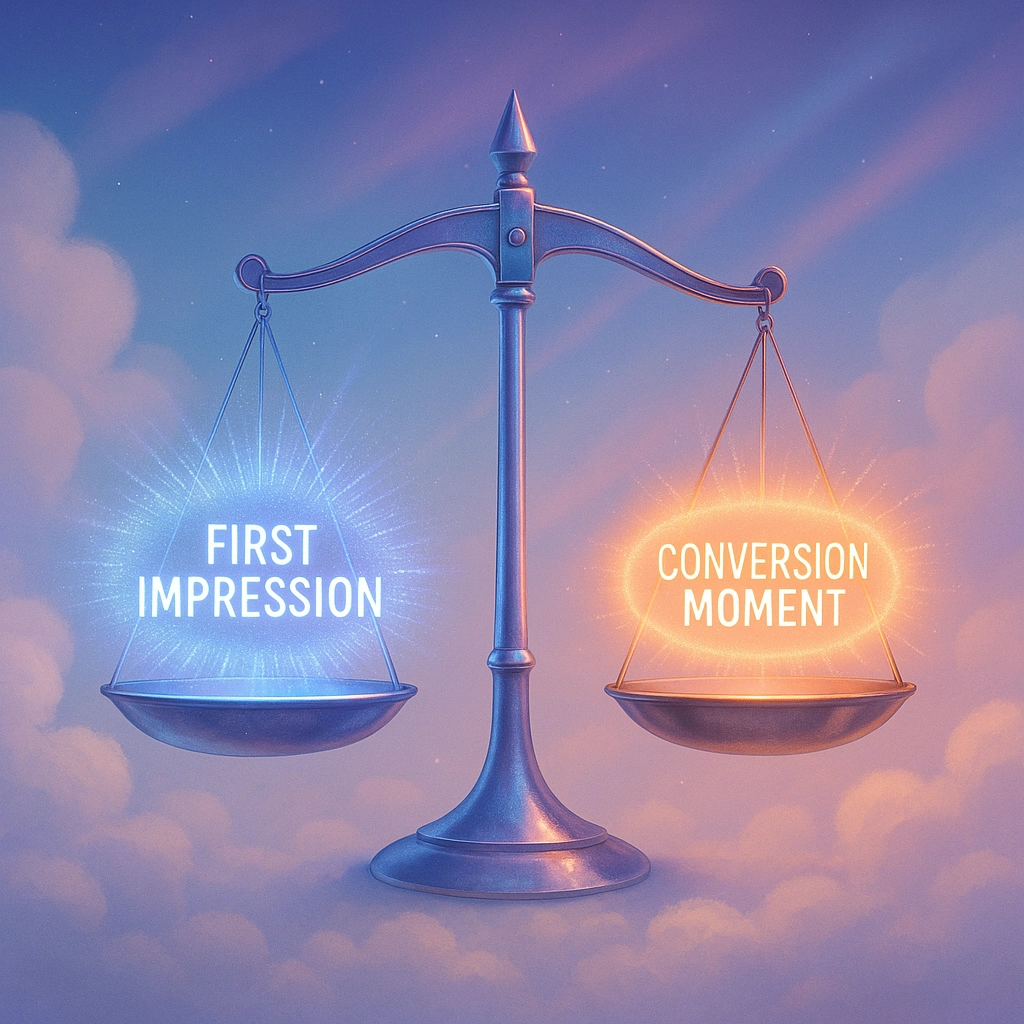The Best Attribution Models for DTC eCommerce Brands on Google Ads
- jax5027
- Aug 25
- 6 min read
Why Attribution Models Make or Break Your DTC Brand (and Your Sanity)
You’ve finally wrangled your Google Ads, poured your budget into some keyword masterpieces, and you think you’re seeing sales spike. But which part of your campaign is actually doing the legwork? Welcome to the endless, soul-destroying riddle of attribution for DTC eCommerce brands. Choose the wrong model and you’ll have as much clarity as a London fog — except it costs you actual money.
Let’s make this simple (and a smidge sarcastic): The attribution model you pick doesn’t just decide what campaign gets a gold star. It shapes your entire Google Ads strategy, from how you scale to how you decide which channel gets that all-important “double down” investment. Sure, Google offers loads of attribution models, but which is best for DTC brands knee-deep in multi-touch chaos? Let's dig in.
All the Attribution Models (Ranked for DTC Relevance)
Google gives you a menu of attribution models that range from finger-in-the-air guesswork to something approaching wizardry. Here’s how they stack up for direct-to-consumer shops:
1. Data-Driven Attribution (AKA: The Rocket Science Model)
How it works: Google uses its black-box machine learning to assign credit to each step in your customer’s journey, based on actual data from your account.
Suited for: DTC brands doing some serious volume. We’re talking 15,000+ clicks and 600+ conversions per month. Scraping by with 10 conversions a month? Forget it.
Strength: Custom-built for your unique account quirks and multi-channel nightmares. It can spot patterns that you and your “spreadsheet genius” simply can’t.
Drawbacks: If you’re not hitting those thresholds, the wizardry breaks and you’re booted back to ‘guess and hope’. Can you trust a machine? Only if it’s fed enough data.

2. Position-Based Attribution (The ‘Fair Play’ Favourite)
How it works: 40% of the credit goes to the first click, 40% to the last, and the last 20% gets sprinkled like confetti over everything in between.
Suited for: Scalers, not lurkers. Great for brands moving from scrappy to savvy and want to avoid short-changing brand discovery or overhyping retargeting.
Strength: Gives love to your upper funnel activity (like engaging Shopping ads and cheeky YouTube bumpers) and the stuff that actually converts.
Drawbacks: Equal weighting doesn’t always match your reality—but it’s the least wrong option while you build up data for fancier models.
3. Last-Click Attribution (The Dinosaur)
How it works: Every conversion is blamed on the last ad your customer clicked before buying, as if your previous ads just stood around looking bored.
Suited for: Brands with ultra-short sales cycles (impulse buys, anyone?) or those who think nuance is overrated.
Strength: It’s easy to explain to your CEO. “This ad equals your sales. Happy?”
Drawbacks: Completely ignores all the effort you put into awareness or nudging, which is what actually moves the needle for most DTC brands.
4. First-Click Attribution (The Daydreamer)
How it works: The first touchpoint gets all the credit, as if your remarketing campaigns didn’t exist.
Suited for: Folks obsessed with brand awareness and new customer acquisition, but who aren’t keen on reality.
Strength: Helps you see the value of top-of-funnel campaigns (if that’s all you do).
Drawbacks: Conveniently pretends that people make decisions on their first touch—spoiler: they really, really don’t.
5. Linear Attribution (The Equal Opportunity Offender)
How it works: Every click and impression is treated like royalty, splitting credit evenly across the journey.
Suited for: Confused marketers or brands with epicly long sales cycles.
Strength: You’ll never upset any one channel.
Drawbacks: Who cares if that random Shopping ad four days ago gets credit? Not your bottom line.
6. Time Decay Attribution (The Recency Bias)
How it works: The closer the touchpoint to the final sale, the more credit it gets. It’s like rewarding people for almost finishing a marathon.
Suited for: Brands where urgency matters — think seasonal offers or flash sales.
Strength: Captures the momentum of a hot prospect.
Drawbacks: Can overrate the pushy end-of-funnel stuff and downplay thoughtful upper-funnel engagement.

The Comparison Table to Rule Them All
Attribution Model | Data Needed | Best For | How It Handles Your Funnel | Reality Check |
Data-Driven | High volume (15k+ clicks, 600+ conversions/month) | Big, complex DTC brands | Learned weighting based on your data | Magical... if you’re big enough |
Position-Based | Any - No threshold | Ambitious, growing DTC brands | Glow-up for first and last touches, little love for the middle | “Best of both worlds” for scaling brands |
Last-Click | None | Simple offers, lazy reporting | Ignores everything but the last click | Fun for dashboards, fatal for strategy |
First-Click | None | Brand-building obsessives | All-in on first impressions, forgets retargeting | Not for grown-up marketers |
Linear | None | “Everyone deserves a cupcake” types | Participation medals for all | The Switzerland of attribution |
Time Decay | None | Urgent, short buying cycles | Recent touchpoints hog the credit | Works for fast-turnover brands |
How to Choose the Right Attribution Model (Without Losing Your Mind)
Are You an Established DTC Brand? Go Data-Driven or Go Home
If you’re running a six or seven-figure ad budget and conversions are flying in, give Data-Driven Attribution a whirl. The algorithm will actually learn from your real results (and yes, Google is a bit cagey about how this works, so keep your data-hungry hat on).
Perks: Automated insights on what’s really driving sales (no more guessing why that random YouTube ad spikes revenue on Thursdays)
Caveats: If your CPAs are all over the shop or you’re not hitting volume, flip back to Position-Based until you’re ready.
Growing Fast But Not There Yet? The Goldilocks Model is Position-Based
Most high-growth DTC brands need to balance growth marketing (get more eyeballs) with performance marketing (get more wallets open). Position-Based Attribution gives a fighting chance to all parts of your funnel, without letting bottom-funnel steals hog all the glory.
Perks: See the real value of discovery and remarketing together.
Caveats: Not perfect, but you’ve got bigger worries — like scaling to Data-Driven territory.
Baby Brand with Small Budgets? Anything But Last-Click
If you’re still warming up, the worst thing you can do is stick to Google’s default (Last-Click). Test Position-Based or even Linear to get a feel for the entire journey — from “who the hell are you?” to “shut up and take my money.”
Advice: Last-Click will under-credit your hustle and leave you cutting brand campaigns you desperately need.

Frequently Googled Questions (With a Dose of Brutal Honesty)
Does Data-Driven Attribution Actually Work for DTC Brands?
Yes—if you meet the data requirements. Otherwise, it’s like expecting Michelin-star service at a motorway café. Data-Driven Attribution shines when you’ve got the volume (and a bit of patience with Google’s mysteries). If you’re faking the numbers, stick with Position-Based.
Will Position-Based Attribution Really Help Me Grow?
Absolutely. It’s the upgrade from “spray and pray” marketing. By giving both the top and bottom of the funnel proper credit, you’ll actually see which campaigns move the needle so you can spend more where it counts.
Is Last-Click Attribution Ever a Good Idea?
Only if you want to keep your CEO quiet for a quarter. Or if you sell novelty socks on impulse buys with zero nurture path. For everyone else: it’s a budget-wasting trap.
Can I Trust Linear or Time Decay Attribution?
As much as you trust your delivery driver to handle champagne glassware. Both have their moments, but only as a stepping stone to more accurate models.
How Often Should I Review My Attribution Model?
Think tax returns, but less fun. Review quarterly or whenever your media mix, sales cycle, or customer behaviour changes. Don’t “set and forget” — Google’s playing chess while you’re still using a Connect Four board.

JudeLuxe Cheatsheet: Stages & Attribution for DTC Brands
Early-stage DTC: Linear or Position-Based — cast a wide net, reveal blind spots
Growth-stage DTC: Position-Based — balance the journey, fuel retargeting and audience building
High-volume/Enterprise DTC: Data-Driven — automate the genius, squeeze every ounce of ROI
If in doubt: Never default to Last-Click, unless you fancy flying blind
For brutal clarity on what’s actually driving profit in your Google Ads, keep evolving your attribution model. Smart brands start simple, grow sophisticated, and never let Google’s default settings make strategic decisions for them.
Curious how you could actually spot and fix attribution chaos in your own account? Dive into our Google Ads Profitability Guide or get personal with us at JudeLuxe. Because sometimes, getting the real answer means calling in the experts (or at least, someone who didn’t sleep through Analytics class).
